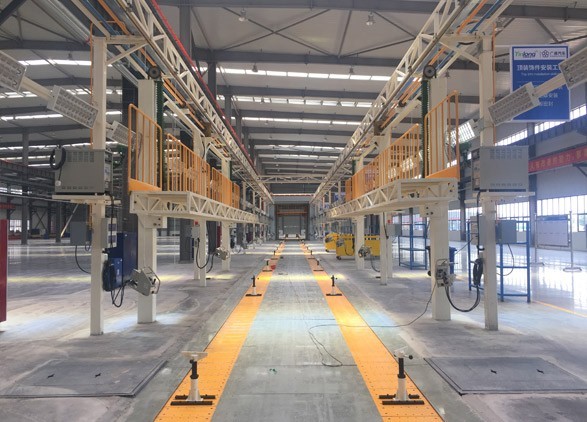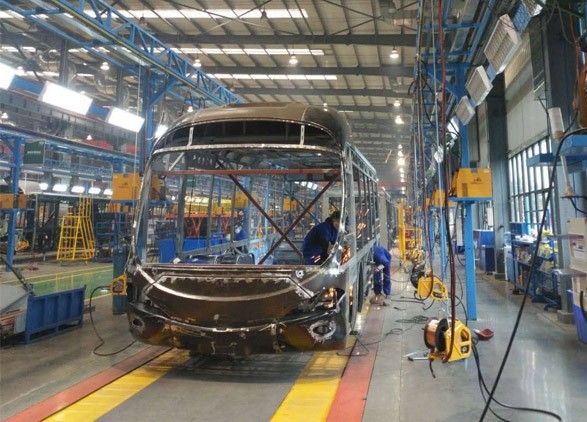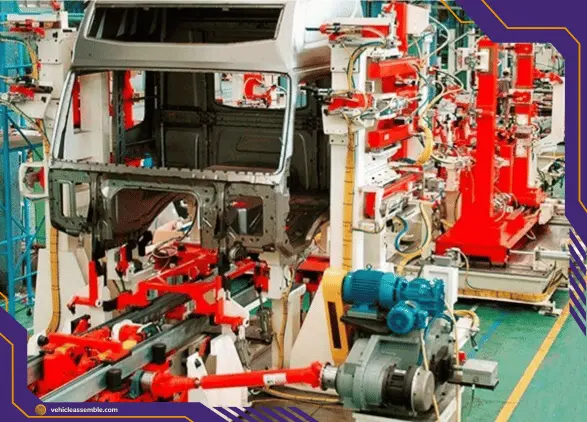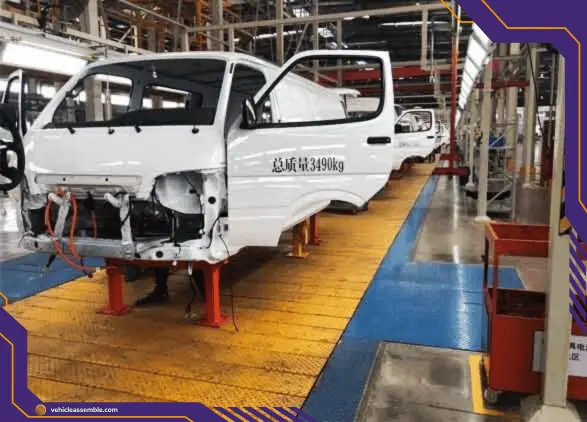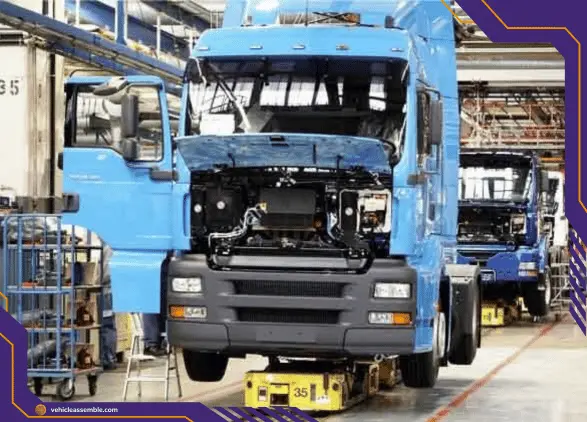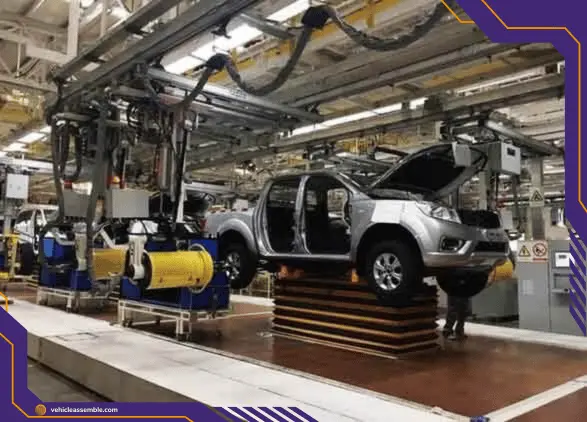Description
Bus Welding Line: A Comprehensive Guide to Efficient and Precise Welding
Are you looking to enhance your knowledge about the Bus Welding Line? This comprehensive guide provides expert insights and detailed information about this welding process, its applications, benefits, and FAQs. Discover how the Bus Welding Line streamlines production and ensures high-quality welds.
Introduction
In industrial manufacturing, welding is crucial in joining materials to create sturdy structures. The Bus Welding Line is a specialized welding process designed to streamline the production of buses, optimizing efficiency and precision. This article dives deep into the workings of the Bus Welding Line, its applications, advantages, and more. Whether you're a seasoned welding professional or a curious enthusiast, this guide covers you.
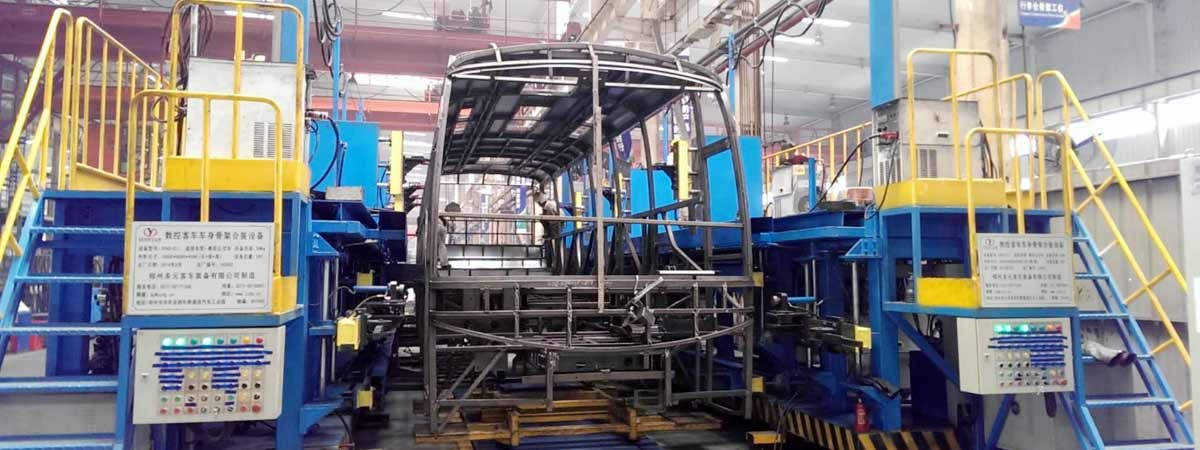
Bus Welding Line: Streamlining Bus Production
The Bus Welding Line is a sophisticated assembly line tailored explicitly for manufacturing buses. It incorporates advanced welding techniques and automation to ensure a seamless and cost-effective production process. By leveraging the Bus Welding Line, bus manufacturers can achieve higher productivity, consistent weld quality, and reduced production times.
Understanding the Key Components
Before we delve into the intricacies of the Bus Welding Line, let's explore its essential components:
Robotic Welding Systems: These cutting-edge robots are at the heart of the Bus Welding Line. They are equipped with precision welding tools to perform complex welds accurately.
Conveyor System: The Bus Welding Line's conveyor system facilitates bus components' movement through various welding stations. It ensures a smooth and continuous flow of materials, minimizing downtime.
Welding Fixtures: These fixtures hold the bus components in place during welding, ensuring precise alignment and consistent results.
Welding Power Source: The welding power source provides the necessary energy to create solid and durable welds, adhering to the highest industry standards.
Quality Control Mechanism: The Bus Welding Line incorporates quality control measures to detect and rectify welding defects, ensuring that only flawless products progress in production.
The Bus Welding Line Process
The Bus Welding Line process can be divided into several stages, each serving a specific purpose:
1. Frame Preparation and Alignment
The bus frame components are prepared and aligned using the welding fixtures in this initial stage. The robotic welding systems precisely position the elements for accurate welding.
2. Welding Side Panels and Roof
During this phase, the Bus Welding Line focuses on welding the side panels and roof of the bus. The robots precisely execute welds, creating strong and aesthetically pleasing joints.
3. Integration of Doors and Windows
The bus doors and windows are integrated into the structure in this stage. The robotic welding systems ensure a secure fit, maintaining the vehicle's structural integrity.
4. Chassis Integration
The bus chassis is integrated into this critical stage, forming the vehicle's foundation. The welding process ensures a robust connection between the chassis and the body.
5. Floor Welding
The bus floor is welded to the frame, creating a stable and secure base for passengers and cargo.
6. Final Touches and Inspection
The Bus Welding Line concludes with the addition of finishing touches and a thorough inspection to ensure the bus meets all safety and quality standards.

Advantages of the Bus Welding Line
The Bus Welding Line offers numerous advantages that make it the preferred choice for bus manufacturers:
1. Enhanced Productivity
By automating the welding process, the Bus Welding Line significantly increases productivity. Robots work tirelessly, reducing the need for manual labor and speeding up production times.
2. Consistent Weld Quality
Robotic welding ensures uniformity and precision in every weld. This consistency leads to higher product quality and improved reliability.
3. Cost-Effectiveness
Though the initial setup cost of a Bus Welding Line may be substantial, the long-term cost savings are significant due to reduced labor costs and increased production efficiency.
4. Improved Safety
Automation minimizes workers' exposure to hazardous welding environments, making the manufacturing process safer and more employee-friendly.
5. Flexibility and Customization
The Bus Welding Line can be programmed to accommodate various bus models and designs, offering manufacturers the flexibility to meet diverse market demands.
6. Faster Time-to-Market
With streamlined production, bus manufacturers can bring their products to market faster, gaining a competitive edge.
Applications of the Bus Welding Line
The Bus Welding Line finds applications in various industries beyond bus manufacturing. These include:
Truck Manufacturing: Similar to buses, trucks can benefit from the efficiency and precision of the Bus Welding Line.
RV and Motorhome Production: The Bus Welding Line can be adapted for welding recreational vehicles and motorhomes, enhancing their structural integrity.
Large Equipment Fabrication: Industries building large equipment like cranes and heavy machinery can use the Bus Welding Line for consistent and reliable welds.
Aerospace: Certain components in the aerospace sector can also be welded using the Bus Welding Line, ensuring top-notch quality.
Marine Industry: The Bus Welding Line's automated welding process can be applied to marine vessels and shipbuilding.
FAQs
Q: What sets the Bus Welding Line apart from traditional welding methods?
The Bus Welding Line stands out due to its high level of automation, precision, and efficiency. It streamlines the welding process, resulting in consistent and reliable welds, while traditional welding methods may involve more manual labor and present challenges in achieving uniformity.
Q: Can the Bus Welding Line adapt to different bus designs?
Yes, one of the critical advantages of the Bus Welding Line is its flexibility. It can be programmed to accommodate various bus models and designs, making it suitable for multiple manufacturers.
Q: Is the Bus Welding Line suitable for small-scale bus production?
While the Bus Welding Line excels in large-scale production, it may not be as cost-effective for small-scale bus manufacturing. Small-scale manufacturers may find traditional welding methods more practical.
Q: Does robotic welding replace human welders entirely?
No, the role of human welders remains essential in operating and maintaining the Bus Welding Line. They oversee the process, perform quality checks, and handle tasks that require human skills.
Q: How does the Bus Welding Line contribute to improved product quality?
The Bus Welding Line's robotic welding systems ensure consistent welds, minimizing the chances of defects and flaws. This enhanced weld quality translates to more reliable and durable buses.
Q: Can the Bus Welding Line be upgraded as technology advances?
Absolutely! The Bus Welding Line is designed to be adaptable to technological advancements. Manufacturers can upgrade their systems to stay at the forefront of welding technology.
Conclusion
The Bus Welding Line is revolutionizing the bus manufacturing industry with its efficiency, precision, and cost-effectiveness. This welding process streamlines production through automation and advanced robotics, enhances weld quality, and reduces manufacturing times. The applications of the Bus Welding Line extend beyond buses to various industries, making it a versatile and sought-after welding solution. Its ability to adapt to different designs and contribute to improved product quality makes it a valuable asset for manufacturers aiming for efficiency and excellence.


